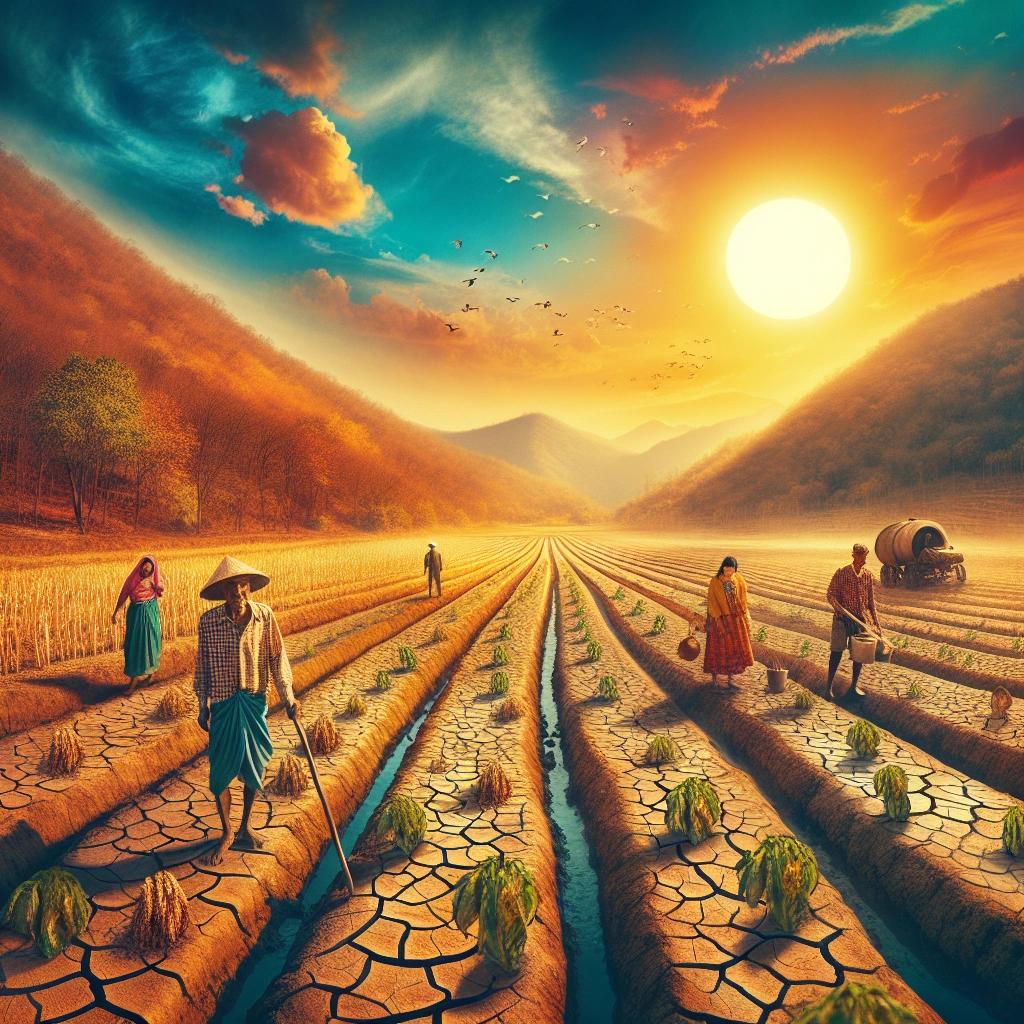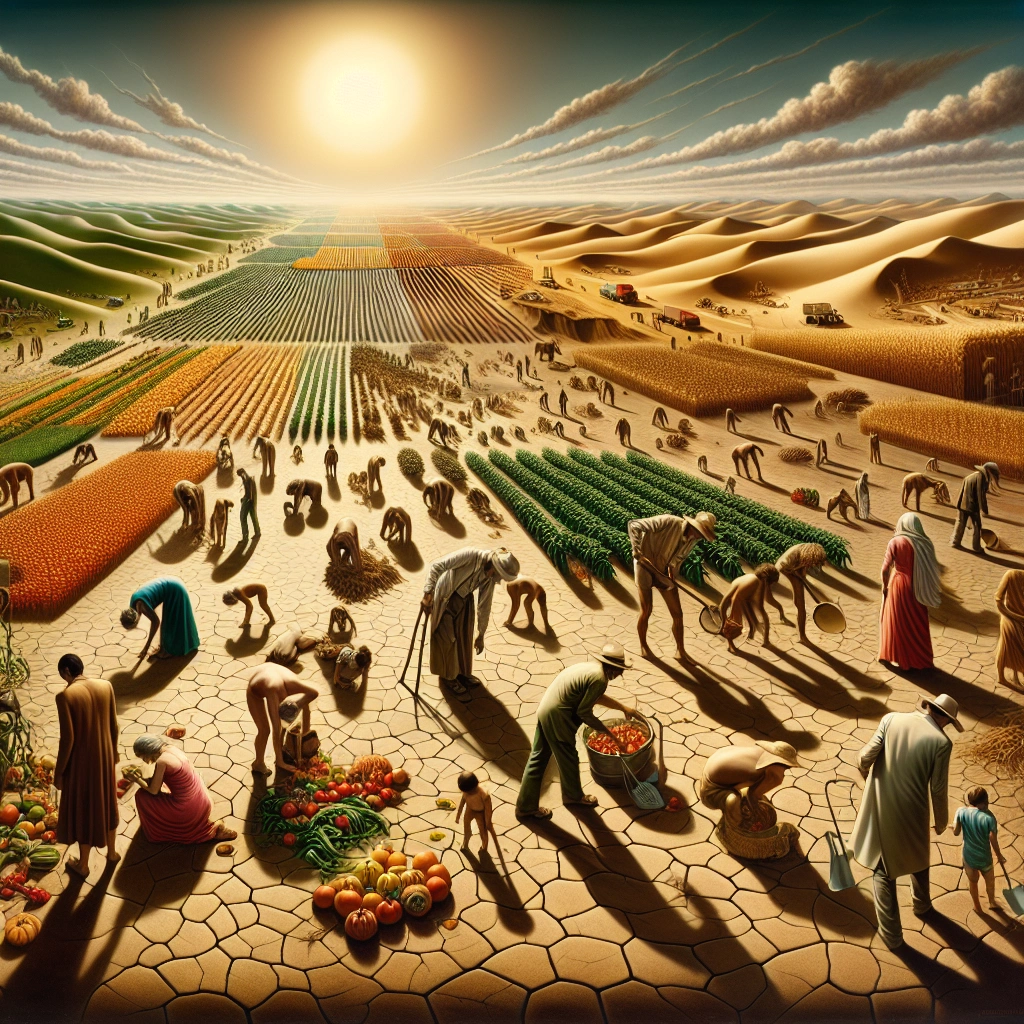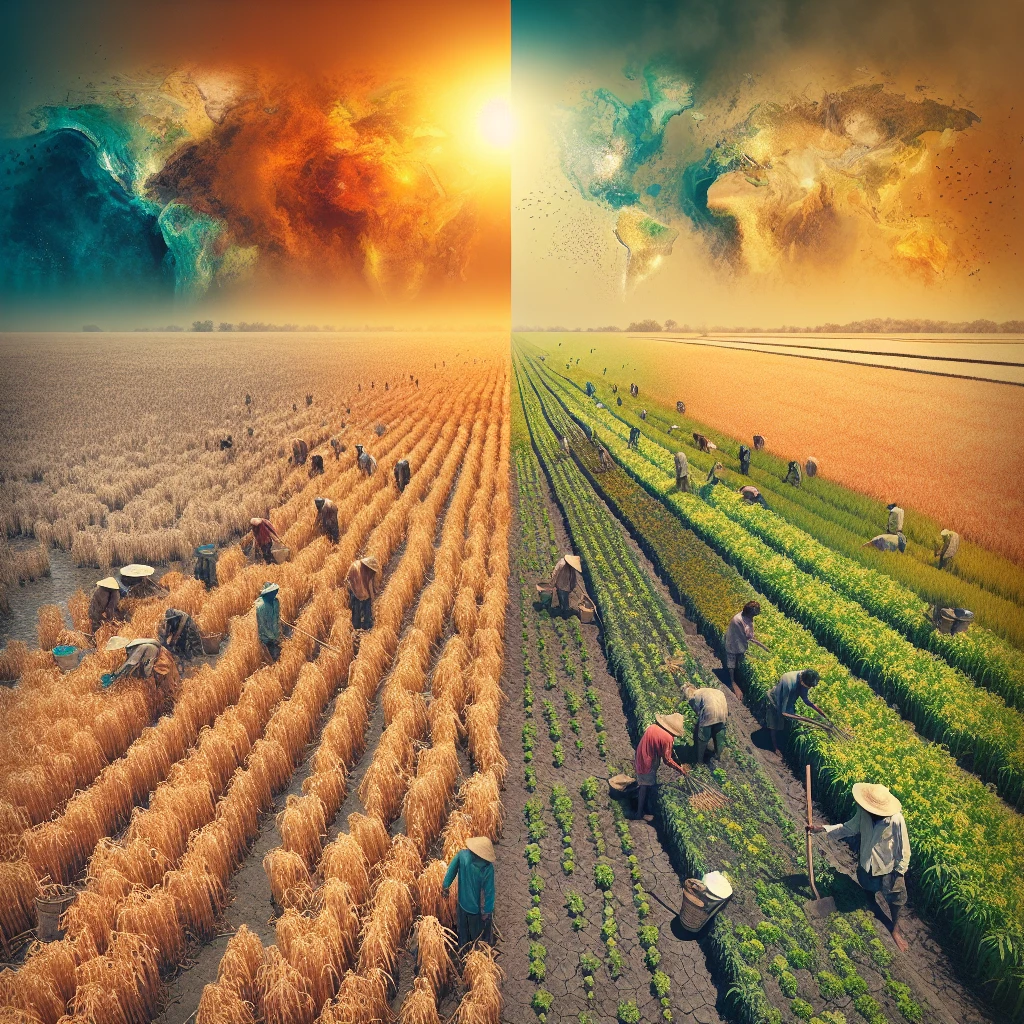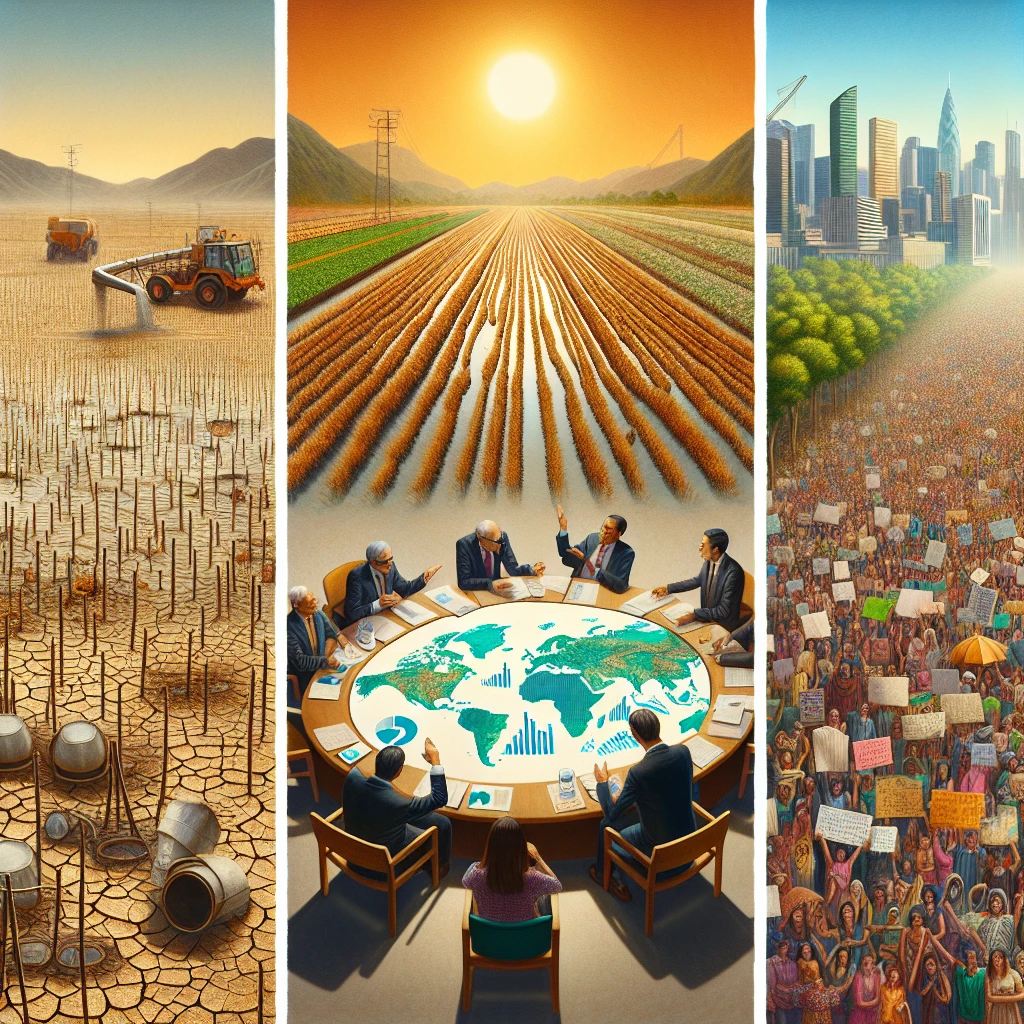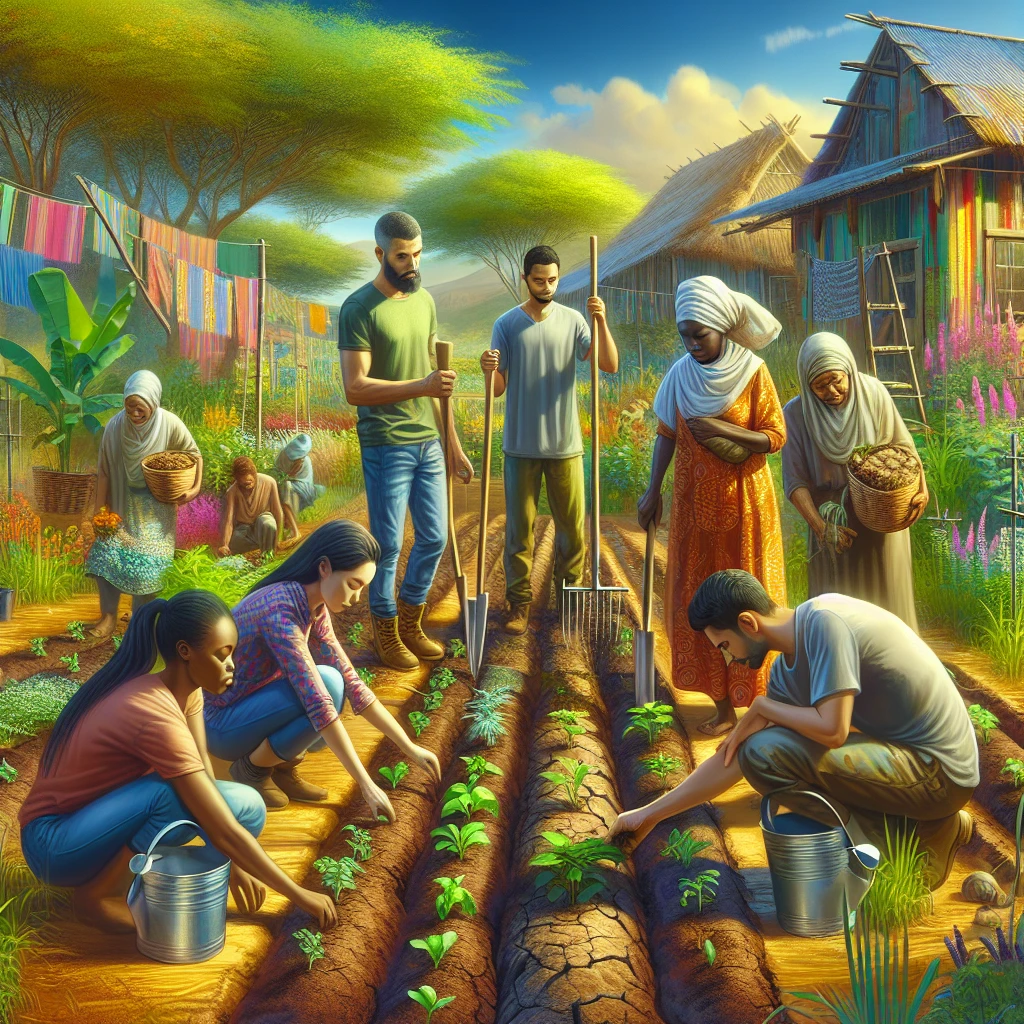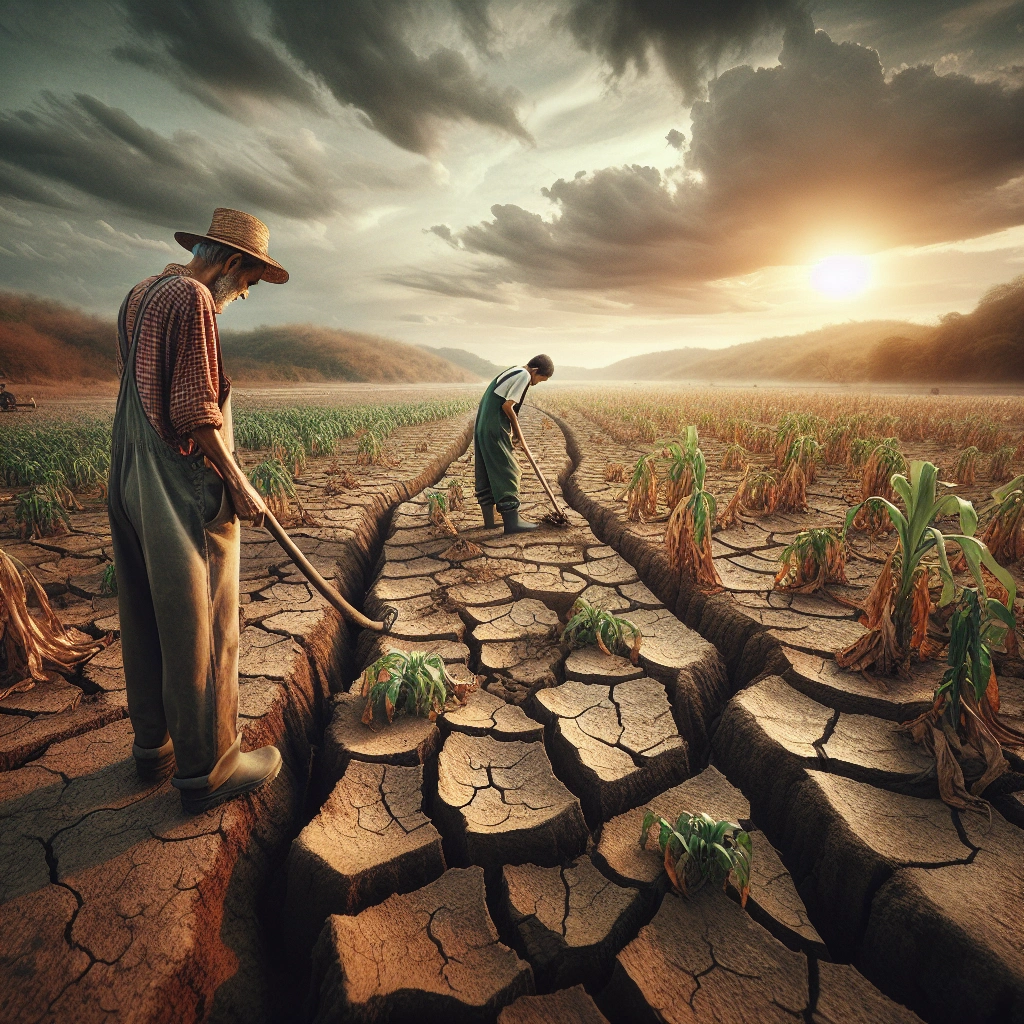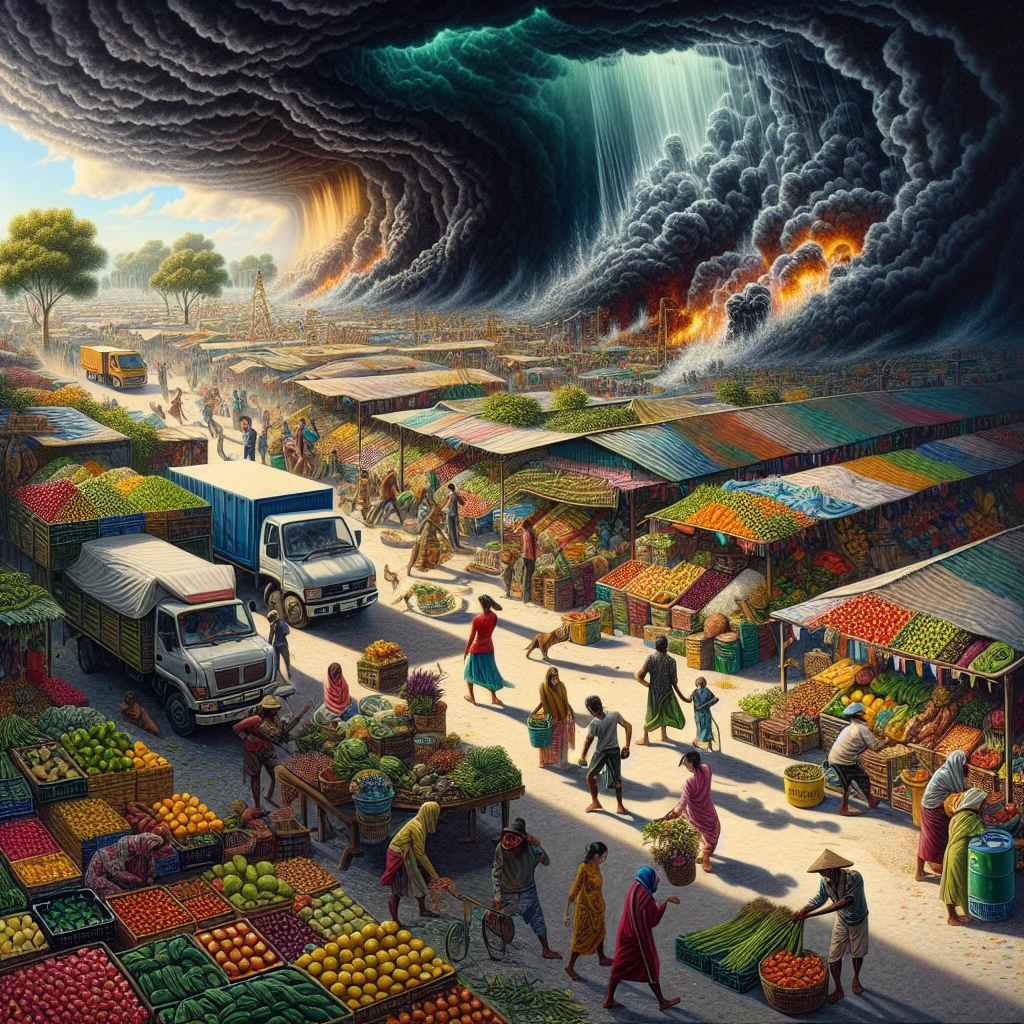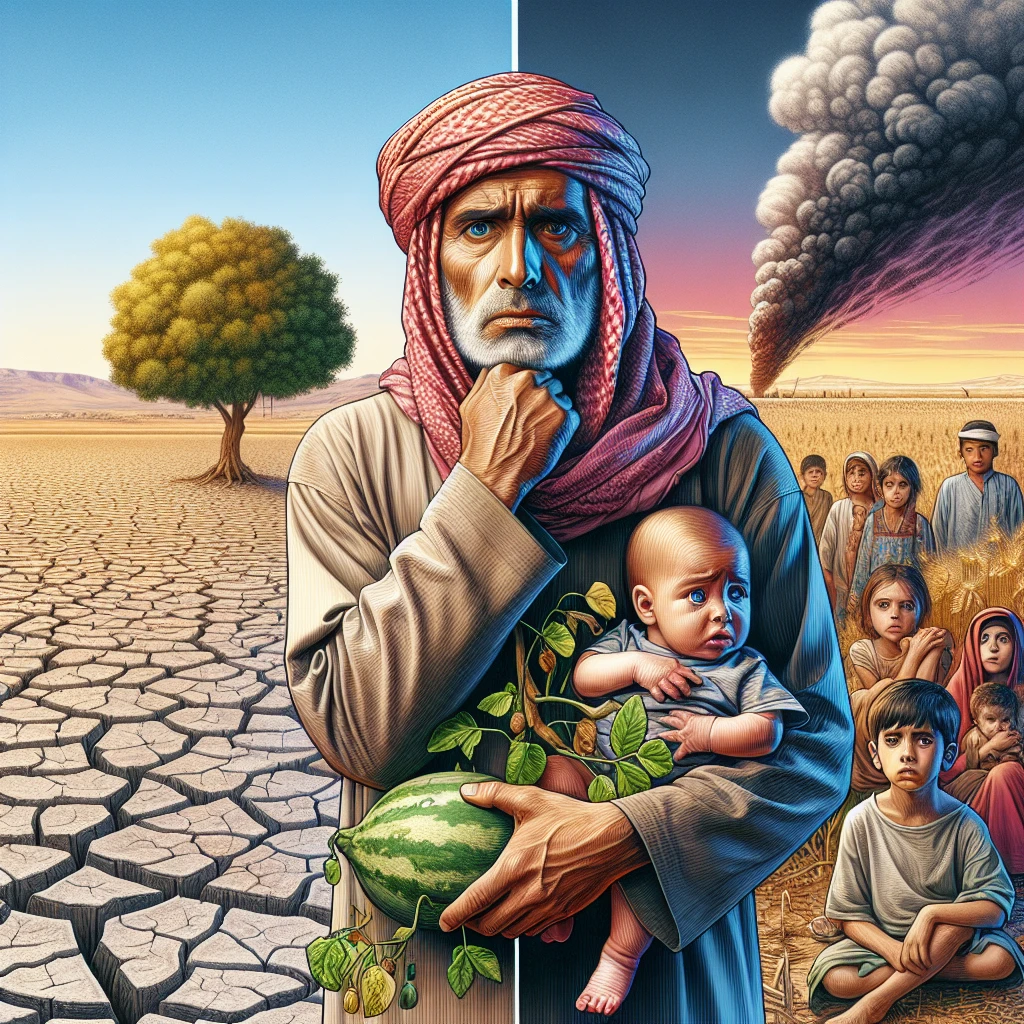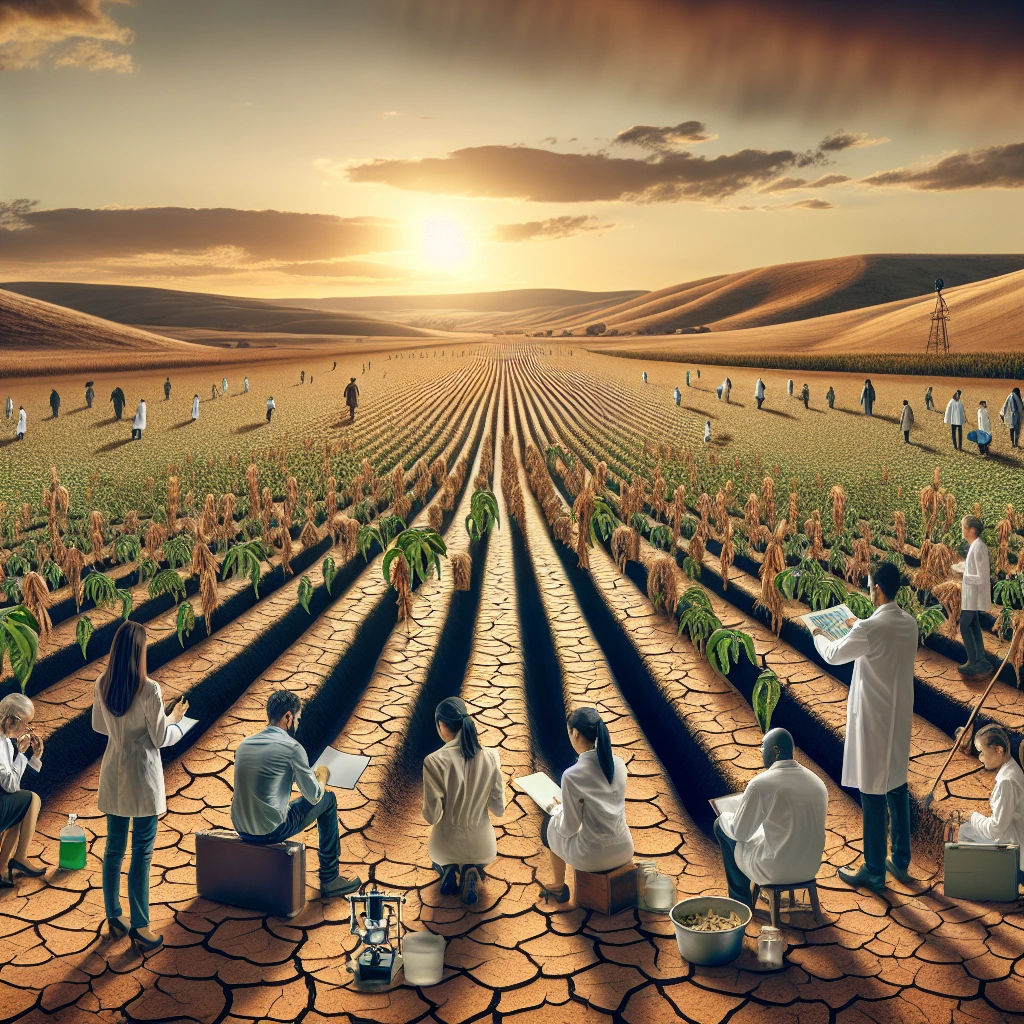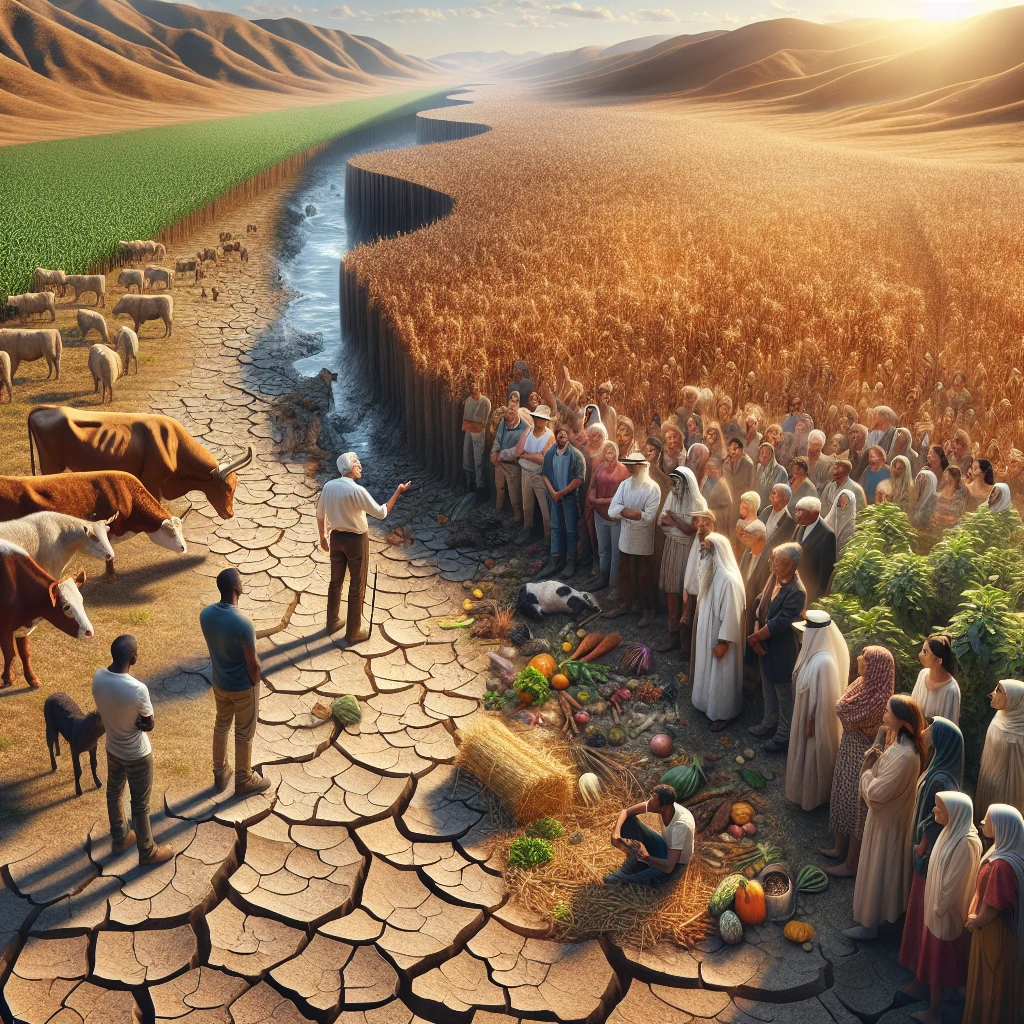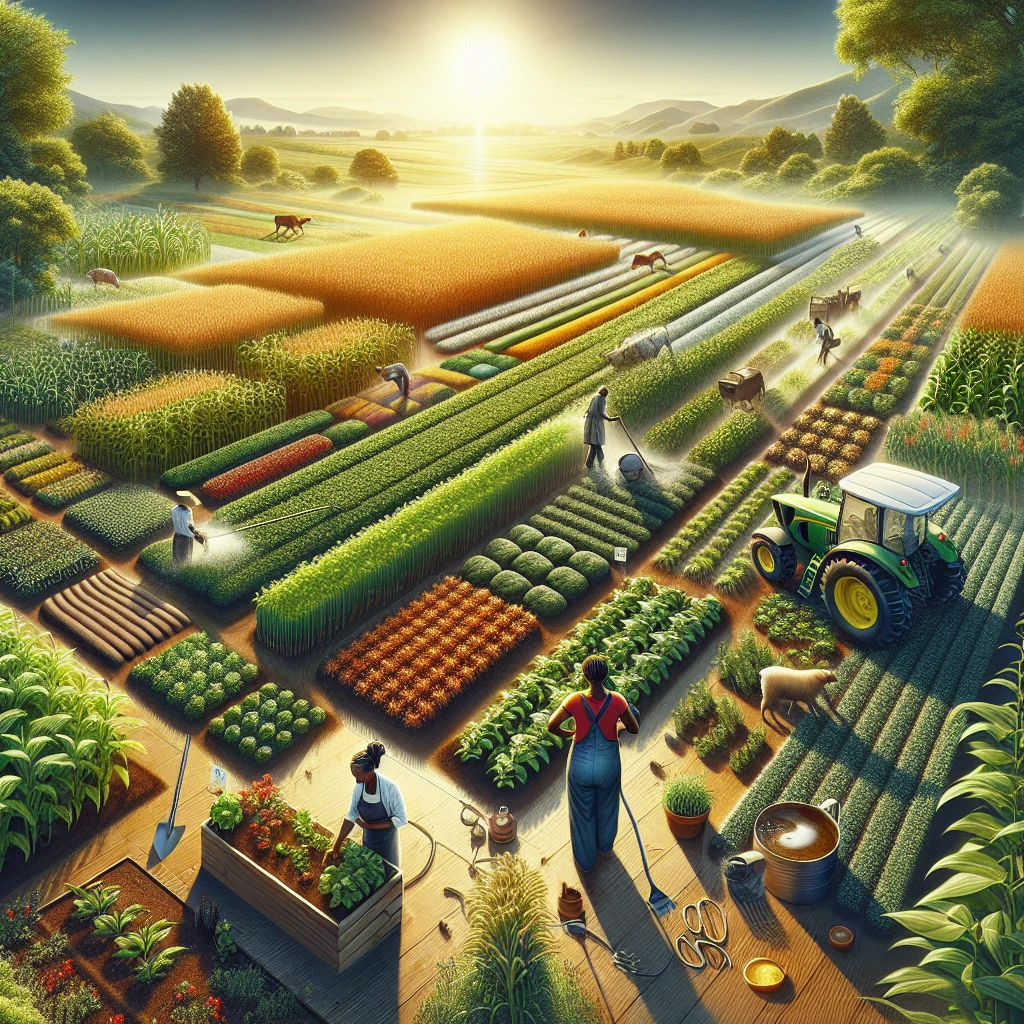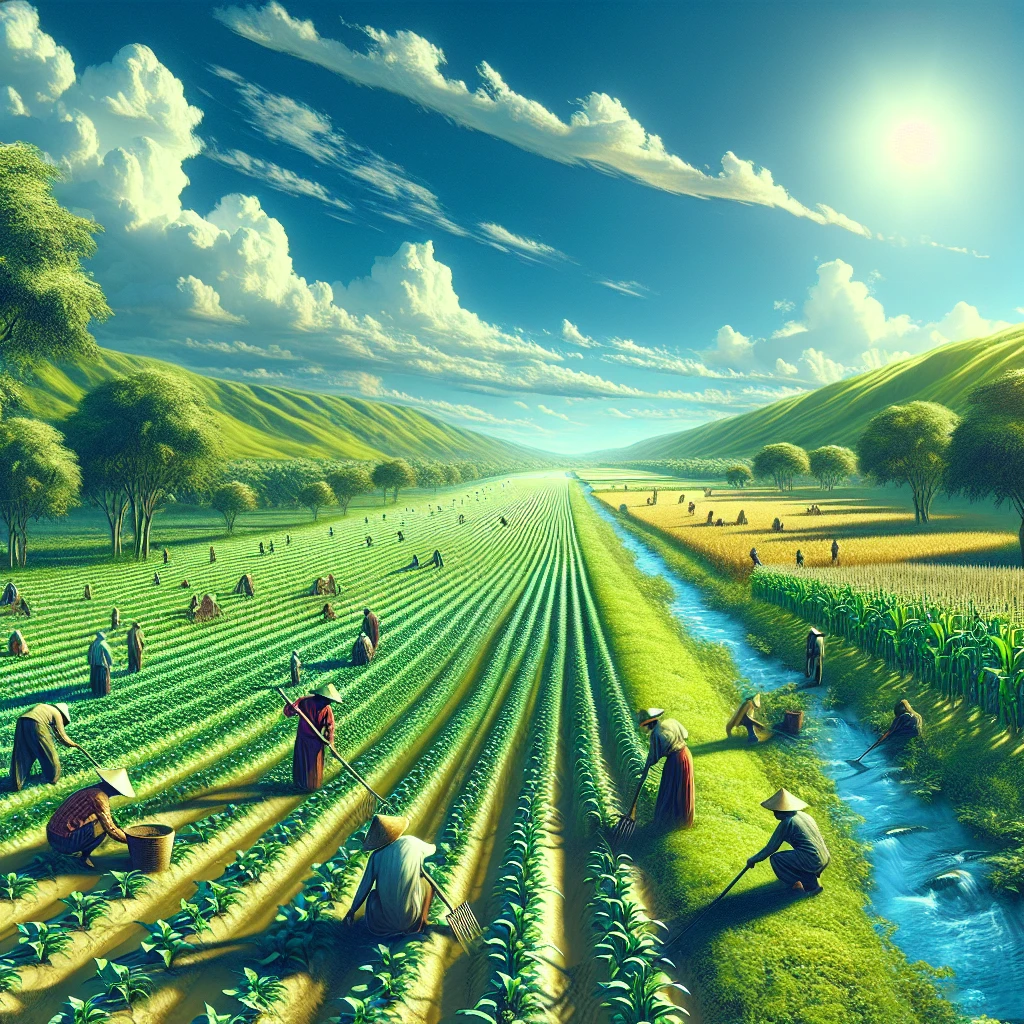

The Global Food Security Index measures the state of food security across 113 countries through indicators related to affordability, availability, quality and safety, and sustainability and adaptation. Climate change is impacting the global food security index by influencing weather patterns, causing heat waves, heavy rainfall, droughts, and floods, which can lead to reduced agricultural productivity and increased food commodity prices.
In addition, climate change is expected to impact crop production and growth through increasing temperatures, more frequent extreme weather events, changes in arable land distribution, and rising carbon dioxide levels.
Check out this Youtube video: “The Global Food Security Index” to understand how climate change is impacting global food security index and what it means for the future of food production.
Understanding the Global Food Security Index
What is the Global Food Security Index?
The Global Food Security Index (GFSI) is an annual benchmarking model that measures food security through affordability, availability, quality, and safety across 109 countries. It provides a comprehensive assessment of a country’s ability to ensure all citizens have access to affordable, safe, and nutritious food to meet their dietary needs, enabling a healthy and active life.
The components and indicators used in the index
The GFSI is constructed from 28 unique indicators, including measures of food affordability, availability, quality, and safety. These indicators are combined to assess the overall food security of a country, providing insights into areas that require improvement to enhance global food security.
Below is a table summarizing the key components and indicators used in the Global Food Security Index:
| Pillars of Food Security | Components |
|---|---|
| Affordability | – Food Price Index – Proportion of household expenditure on food |
| Availability | – Sufficiency of supply – Access to financing for farmers |
| Quality & Safety | – Food safety standards – Nutritional standards |
The components and indicators utilized in the Global Food Security Index allow for a holistic evaluation of a country’s food security, helping to identify areas that need attention to ensure global food security in the face of changing climates and other challenges.
Remember, “Food security is national security!”
The Impact of Climate Change on Food Security
Increase in extreme weather events affecting food production
Extreme weather events, including floods, droughts, heatwaves, cyclones, and wildfires, have a severe impact on food production. These events can harm crops, reduce yields, and destabilize the supply of food.
For example, excessive rainfall can erode soil and deplete nutrients, while droughts can lead to water scarcity and hinder crop growth. Additionally, heatwaves can directly stress crops and lower their quality, further exacerbating the challenges of food production.
Changes in precipitation patterns and their influence on agriculture
The changes in precipitation patterns greatly influence agriculture. More heavy precipitation, linked to climate change, can harm crops by eroding soil and depleting nutrients.
On the other hand, reduced precipitation, like droughts, leads to water scarcity and hinders crop growth. These changes significantly impact the reliability of food production, affecting both the quantity and quality of food available for consumption.
Rising temperatures and their effects on crop yields
Rising temperatures pose a significant threat to crop yields. Higher temperatures, heatwaves, and droughts intensify drought stress and hinder efforts to increase yields in many regions.
For example, projections indicate that for every degree Celsius rise in temperatures, staple crops like corn face estimated yield reductions of 7.4 percent. Furthermore, livestock are at risk due to heat stress and reduced quality of their food supply, leading to a further strain on food security.
The impact of climate change on food security is undeniable, with extreme weather events, changes in precipitation patterns, and rising temperatures significantly affecting food production. These factors not only reduce crop yields but also threaten the reliability of food supplies.
It is crucial to address these challenges to ensure global food security for current and future generations.
| Extreme Weather Events | Precipitation Patterns | Rising Temperatures |
|---|---|---|
| Floods, droughts, heatwaves, cyclones, and wildfires | Heavy precipitation erodes soil and depletes nutrients | Rising temperatures intensify drought stress and hinder yield increase |
Vulnerable Regions and Populations
Regions most affected by climate change in terms of food security
Sub-Saharan Africa, South Asia, and Southeast Asia are the regions most severely impacted by climate change in terms of food security. These areas are home to farming families who face disproportionate poverty and vulnerability due to crop failures and hunger caused by the drastic effects of climate change.
In recent years, rising temperatures and extreme weather events like heat waves, droughts, floods, cyclones, and wildfires have intensified, leading to significant challenges in maintaining food security in these regions.
Population groups at higher risk of food insecurity due to climate change
The population groups at the highest risk of food insecurity due to climate change are primarily found in Sub-Saharan Africa, South Asia, and Southeast Asia. Approximately 80% of the global population facing the greatest risk of crop failures and hunger resulting from climate change comes from these vulnerable areas.
Farming families in these regions are particularly susceptible to the adverse impacts of climate change due to their disproportionate levels of poverty and vulnerability. The extreme weather conditions brought about by climate change have further exacerbated food insecurity, pushing these population groups to the brink of severe hunger and poverty.
Economic Impact
Financial implications of climate change on global food security
Climate change has substantial financial implications on global food security, leading to increased costs associated with extreme weather events such as droughts, floods, and heat waves. These events disrupt agricultural production, leading to food shortages and higher prices.
The financial burden is exacerbated by the need for emergency aid and assistance to affected regions, further straining resources.
Cost of adaptation and mitigation measures for safeguarding food production
The cost of adapting and mitigating the impact of climate change on food production is significant. Implementing measures such as sustainable agriculture, resilient crop varieties, and water management infrastructures requires substantial investment.
Additionally, the cost of developing and deploying technology for climate-resilient farming practices adds to the financial implications. These measures are crucial for safeguarding food production and ensuring long-term food security, but they come with a substantial financial burden.
Agricultural Practices and Adaptation
Climate change has significantly impacted agricultural practices, triggering the need for innovative farming methods to combat its effects. Farmers are now utilizing climate-smart technologies such as drip irrigation, renewable energy-based farming systems, and precision agriculture involving GPS and drones to optimize crop production.
These methods aim to increase sustainability by conserving resources and reducing environmental impact. Additionally, the role of technology in increasing resilience and sustainability in agriculture cannot be overlooked.
Advancements in machinery, biotechnology, and digital agriculture systems have enabled more efficient resource utilization, improved yields, and the transformation of the global food production system. As a result, technology is crucial in mitigating the impact of climate change on the food security index by enhancing food production, reducing waste, and promoting sustainable agricultural practices.
| Innovative Farming Methods | Role of Technology |
|---|---|
| Drip Irrigation | Precision Agriculture |
| Renewable Energy-Based Farming Systems | Biotechnology |
| Precision Agriculture (GPS, Drones) | Digital Agriculture Systems |
The integration of these innovative farming methods and technology is essential in adapting to the challenges posed by climate change, ultimately contributing to the global food security index in a positive way.
Political and Policy Implications
International agreements and policies to address climate change and food security
The international community has made significant strides in addressing the intersection of climate change and food security. The Paris Agreement stands as a monumental achievement, reflecting the commitment of 196 nations to protect food security and combat the adverse impacts of climate change on agricultural systems.
Additionally, the UN Framework Convention on Climate Change (UNFCCC) has underscored the need for coordinated global efforts to mitigate the effects of climate change on food production.
Role of governments in implementing strategies to protect food production and distribution
Governments play a pivotal role in implementing strategies to safeguard food production and distribution in the face of climate change. Their focus should be on strengthening agricultural resilience, ensuring sustainability practices, and fostering enhanced food distribution networks.
By investing in modern agricultural technologies and infrastructure, governments can bolster food security, protect against climate-induced challenges, and promote sustainable food systems.
Community Resilience and Local Initiatives
Grassroots efforts to promote sustainable food production in the face of climate change
The global community is witnessing an uprising of grassroots efforts aimed at promoting sustainable food production in the face of climate change. Through initiatives led by local farmers, environmental activists, and community leaders, sustainable agricultural methods are being championed to mitigate the impact of climate change on food security.
One inspiring example is the “Farm-to-Table” movement, where local farmers directly supply fresh produce to nearby communities, reducing carbon emissions associated with long-distance food transportation. Additionally, community-supported agriculture (CSA) programs empower individuals to invest directly in local farms, fostering sustainable practices resilient to climate change.
Community-based adaptation strategies to enhance food security
Communities around the world are embracing community-based adaptation strategies to enhance food security in the wake of climate change. One powerful approach is the development of resilient crop varieties that can thrive under changing climate conditions, bolstering food security for local populations.
For instance, the use of drought-resistant seeds and climate-smart farming practices empowers communities to sustainably produce food despite climatic challenges. Furthermore, the promotion of agroecological techniques, such as intercropping and water conservation methods, supports local food resilience and empowers communities to adapt to the evolving climate.
| Grassroots Efforts | Community-based Adaptation |
|---|---|
| Farm-to-Table Movement | Resilient Crop Varieties |
| Community-Supported Agriculture | Drought-Resistant Seeds |
| Local Farmers Initiatives | Climate-Smart Farming Practices |
The collaboration between local communities and grassroots organizations is pivotal in spearheading sustainable food production and enhancing food security in the face of climate change. These initiatives bolster the resilience of local food systems, ensuring access to nutritious food despite the challenges posed by a changing climate.
Case Studies
Examination of countries or regions experiencing significant impacts on food security due to climate change
The impact of climate change on food security is evident in many countries and regions. For example, in sub-Saharan Africa, extreme weather events like droughts and floods have led to crop failures and decreased agricultural productivity, resulting in food shortages and increased prices.
Additionally, small island nations in the Pacific are experiencing rising sea levels, leading to saltwater intrusion, which negatively affects crop yields and freshwater sources, ultimately impacting food security.
Furthermore, countries in South Asia are facing challenges due to erratic monsoon patterns, impacting both crop cultivation and water availability. This has resulted in food insecurity for many communities.
In South America, deforestation and changing rainfall patterns are causing disruptions in food production, particularly for staple crops like rice and soybeans. These examples demonstrate the diverse and severe impacts of climate change on global food security.
Success stories of nations implementing effective measures to mitigate the effects of climate change on food security
Amidst the challenges, there are success stories of nations effectively mitigating the effects of climate change on food security. For instance, Bangladesh has implemented innovative strategies such as floating gardens, which enable cultivation in flood-prone areas, ensuring food production even during inundation.
Additionally, Vietnam has made strides in climate-resilient agriculture by promoting the use of salt-tolerant rice varieties, safeguarding against salinity intrusion.
Moreover, Ethiopia has implemented sustainable land management practices and diversified crop production to enhance resilience to climate variability, resulting in improved food security for vulnerable communities. These success stories highlight the importance of proactive measures and adaptive strategies in safeguarding food security amidst the impacts of climate change.
| Country/Region | Impact on Food Security |
|---|---|
| Sub-Saharan Africa | Crop failures, food shortages |
| Pacific Islands | Saltwater intrusion, water scarcity |
| South Asia | Erratic monsoons, food insecurity |
| South America | Deforestation, disrupted food production |
These examples showcase the resilience and adaptive capacity of nations in addressing the challenges posed by climate change, providing valuable lessons for global efforts to ensure food security in a changing climate.
Health and Nutritional Implications
The link between climate change, food security, and public health is undeniable. As climate change leads to disruptions in food production, transport, and availability, it directly impacts global food security.
This, in turn, has significant implications for public health, as reduced food availability can lead to increased rates of malnutrition and related health issues.
One significant consequence of reduced food availability and access due to climate change is the heightened risk of malnutrition and related health conditions. When individuals and communities have limited access to nutritious food, it can result in deficiencies in essential nutrients, leading to an increased prevalence of health conditions such as obesity, diabetes, heart disease, and other chronic diseases.
The lack of access to affordable, nutritious food can exacerbate health disparities and contribute to overall poorer health outcomes.
In essence, climate change’s impact on global food security directly correlates with public health and nutritional implications. The reduced availability and access to food due to climate-related disruptions contribute to a myriad of health challenges, emphasizing the interconnectedness of environmental factors and human well-being.
This highlights the critical need for comprehensive strategies to address both food security and public health in the face of climate change.
| Climate Change Impact | Public Health Implication |
|---|---|
| Disrupted food production and transport | Increased risk of malnutrition and related health conditions |
| Limited access to nutritious food | Exacerbation of health disparities and poorer health outcomes |
The link between climate change, food security, and public health has profound implications for global populations. As climate change continues to affect food availability and access worldwide, the interconnected challenges of ensuring nutritional adequacy and safeguarding public health become increasingly complex and urgent to address.
Global Cooperation and Partnerships
Stronger international cooperation in high emissions reduction and climate change mitigation efforts is essential to ensure the stability of the global food security index. Collaborative initiatives among countries and organizations to address climate change and food security play a pivotal role in implementing sustainable solutions and adapting to the challenges posed by a changing climate.
By working together, nations can share knowledge, resources, and best practices to strengthen agricultural resilience and safeguard global food security for future generations.
Food Waste and Distribution Challenges
Efforts to minimize food waste and improve distribution systems in the context of climate change
| Efforts to Minimize Food Waste | Description |
|---|---|
| United States 2030 Food Loss and Waste Reduction Goal | Aimed at reducing food waste by 50% to 164 pounds per person. |
| Initiatives by EPA and USDA | Collaborative strategies to align the 2030 goal with the UN’s Sustainable Development Goal. |
| USDA’s Additional $25 Million Investment | Expansion of efforts to prevent and reduce food loss and waste. |
| Innovative Approaches to Address Food Waste and Distribution | Analyzing the relationship between climate change, agriculture, and global–local food security. |
| Best Practices for Creating Sustainable and Equitable Food Systems | Introducing sustainable and equitable practices in land use and food-growing initiatives. |
Strategies for ensuring equitable access to food in the face of changing environmental conditions
| Strategies for Equitable Food Access | Description |
|---|---|
| USDA’s $5 Billion Planned Investments | Highlighting initiatives to end hunger, malnutrition, and build sustainable, inclusive food systems. |
| Equitable Systems Regulations and Initiatives | Emphasizing the importance of zoning ordinances for healthy food growth and economic opportunity. |
| USDA’s Focus on Equity in Providing Healthy Food Options | Ensuring diverse partnerships for fostering healthy food options across all life stages. |
| Innovation Funding Gap Addressing World Hunger and Sustainable Food Systems | Bridging the funding gap for food system innovation to reduce hunger and emissions. |
In the midst of climate change, the United States has set ambitious goals to reduce food waste, including the 2030 Food Loss and Waste Reduction Goal, which aims to cut waste by 50%. Collaborative initiatives by EPA and USDA are aligning these efforts with the UN’s Sustainable Development Goal to combat food waste and loss.
Additionally, the USDA’s $25 million investment is further expanding proactive measures to prevent and reduce food waste, ensuring a more sustainable approach. Furthermore, innovative strategies are being implemented to address the intricate relationship between climate change, agriculture, and global–local food security, aiming to create more sustainable and equitable practices.
The USDA is at the forefront of fostering equitable access to food in the face of changing environmental conditions, with significant investments planned to address hunger, malnutrition, and build inclusive food systems. Moreover, regulatory measures such as zoning ordinances and land use initiatives are promoting healthy food growth and economic opportunity.
The USDA’s focus on equity in providing healthy food options ensures diverse partnerships to foster a range of healthy choices, touching all life stages. Additionally, efforts to bridge the funding gap for food system innovation are underway to combat world hunger and achieve sustainable, low-emission food systems.
Ethical Considerations
Equity and justice in the distribution of resources and access to food in a changing climate
The changing climate disproportionately affects vulnerable populations, worsening food insecurity and access disparities. For example, small-scale farmers in developing countries face challenges due to changing weather patterns, impacting their ability to produce food.
This inequality highlights the need for policies and initiatives that prioritize fair resource distribution and access, ensuring that all communities have the means to obtain nutritious food despite climate challenges.
Ethical implications of global disparities in food security and climate change impacts
Global disparities in food security and climate change impacts raise ethical concerns regarding the uneven distribution of consequences. For instance, developed nations contribute significantly to greenhouse gas emissions, yet developing countries bear the brunt of adverse effects on food security.
This presents an ethical dilemma requiring international cooperation and support to address the disparities and ensure that communities worldwide have equitable access to food resources, regardless of their geographical location or economic status.
| Country | Food Security Index | Climate Change Impact |
|---|---|---|
| United States | 87.2 | High |
| India | 65.8 | Severe |
| Brazil | 73.5 | Moderate |
Addressing equity and justice in resource distribution and mitigating global disparities in food security and climate change impacts requires a conscientious effort from all nations to uphold ethical standards and ensure the well-being of all individuals, irrespective of their circumstances.
Importance of Research and Data Analysis
The role of scientific research in understanding the complex interactions between climate change and food security is vital, as it provides the necessary evidence to comprehend the impact of changing weather patterns on agriculture and food production. Through scientific research, experts can analyze data on temperature changes, extreme weather events, and their effects on crop yields, ultimately leading to a better understanding of how climate change is disrupting food security globally.
Importance of accurate and timely data for effective decision-making and policy formulation cannot be overstated. With precise and up-to-date data, policymakers can make informed decisions and formulate relevant policies to address the challenges posed by climate change.
Accurate data on food availability, access, and utilization is crucial for identifying vulnerable areas and implementing targeted interventions to ensure food security in those regions. Additionally, timely data allows for proactive measures to be taken, mitigating the adverse effects of climate change on global food security.
| Challenges | Solutions |
|---|---|
| Lack of comprehensive data | Enhancing data collection processes and utilizing advanced technologies for accurate data gathering |
| Inconsistent data availability | Implementing standardized data collection methods and promoting data transparency |
| Data obsolescence | Regularly updating data collection techniques and adopting real-time monitoring systems |
Education and Awareness
Promoting public understanding of the links between climate change and food security
Global warming is causing extreme weather patterns, leading to heat waves, heavy rainfall, and droughts. These changes directly impact food production and availability, affecting global food security.
By educating the public about these linkages, we can raise awareness about the urgent need to address climate change to ensure food security for future generations.
Educating communities and individuals about sustainable food practices and consumption habits
It’s crucial to educate communities and individuals on sustainable food practices and consumption habits. For example, promoting regenerative agriculture and supporting farmers can help build a stronger food system.
Furthermore, initiatives to encourage mindful eating, adopting plant-based diets, and choosing foods with a low carbon footprint can contribute to sustainable food consumption. By empowering people with knowledge and skills, we can drive positive changes in food behaviors, ultimately contributing to global food security.
Recommended Amazon Products for Climate-Resilient Agriculture
Here’s a curated list of products that can help you implement climate-resilient agricultural practices with ease. These recommendations are based on their functionality, reviews, and popularity.
1. Drip Irrigation Kit
A drip irrigation kit ensures efficient water usage in agriculture by delivering water directly to the base of plants. The
is highly recommended for promoting water conservation and ensuring optimal plant growth.| Pros | Cons |
|---|---|
| Efficient water usage | Initial setup may be complex |
| Consistent water delivery | Some maintenance required |
| Reduces weed growth | Potentially expensive upfront |
2. Portable Weather Station
A portable weather station provides real-time data on temperature, humidity, and rainfall, allowing farmers to make informed decisions based on weather patterns. The
is an excellent choice for monitoring climate conditions and planning farming activities accordingly.| Pros | Cons |
|---|---|
| Real-time weather data | Limited range of some models |
| Easy to set up and use | Battery replacement needed |
| Helps with crop planning | May require calibration |
3. High-Efficiency Solar Panels
High-efficiency solar panels enable off-grid power generation, reducing reliance on traditional energy sources for agricultural operations. The
are recommended for powering irrigation systems, lighting, and other farm equipment sustainably.| Pros | Cons |
|---|---|
| Sustainable energy source | High initial investment |
| Low maintenance | Weather-dependent efficiency |
| Reduces operating costs | Limited output in low light |
4. Soil Moisture Meter
A soil moisture meter provides accurate measurements of soil moisture levels, helping farmers adjust irrigation and watering schedules as needed. The
is a valuable tool for promoting water efficiency and preventing both overwatering and underwatering.| Pros | Cons |
|---|---|
| Prevents water wastage | Calibration required |
| Easy to use and read | Limited depth measurements |
| Promotes healthy plant growth | Electronic components |
5. Climate-Resilient Seed Varieties
Climate-resilient seed varieties are specially bred to withstand the challenges posed by climate change, such as extreme weather conditions and changing precipitation patterns. Explore a wide selection of
Climate-Resilient Seed Varieties
to ensure the resilience of your agricultural yield.| Pros | Cons |
|---|---|
| Improved crop resilience | Potential seed availability |
| Greater yield stability | Adaptation period |
| Enhanced environmental fit | Varied success by region |
Top Recommended Product for Climate-Resilient Agriculture
If you’re looking for the best solution for implementing climate-resilient agricultural practices, we highly recommend the
. Its efficient water usage and promotion of optimal plant growth make it an essential tool for climate-resilient agriculture.Ready to enhance your agricultural practices for climate resilience? Check out the
today for sustainable and effective water management!Conclusion
The impact of climate change on the global food security index is evident in the decreasing agricultural productivity, changing weather patterns, and increasing frequency of extreme weather events. These factors have led to food shortages, price volatility, and reduced access to nutritious food, particularly in vulnerable regions.
Furthermore, it is imperative that countries, organizations, and individuals collaborate and take proactive measures to address the challenges posed by climate change to food security. This includes investing in sustainable farming practices, improving water management, and developing climate-resilient crops.
It is also essential to prioritize the needs of smallholder farmers and support them in adapting to climate change and building resilience in their communities.
It is crucial for policymakers to prioritize climate change adaptation and mitigation efforts, as well as to provide support for sustainable food production and distribution systems. By working together and taking decisive action, we can help ensure food security for all and build a more resilient global food system in the face of climate change.

